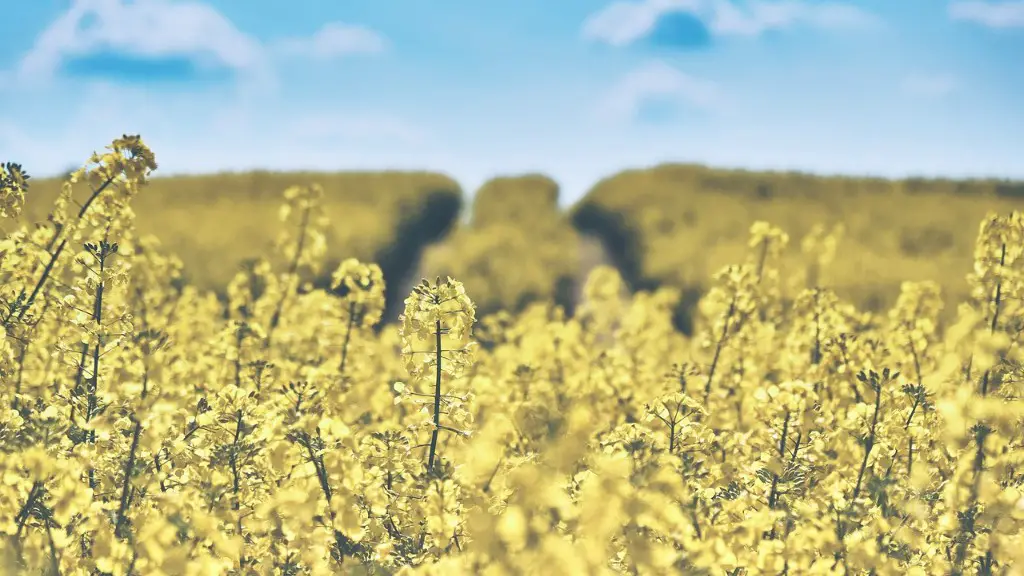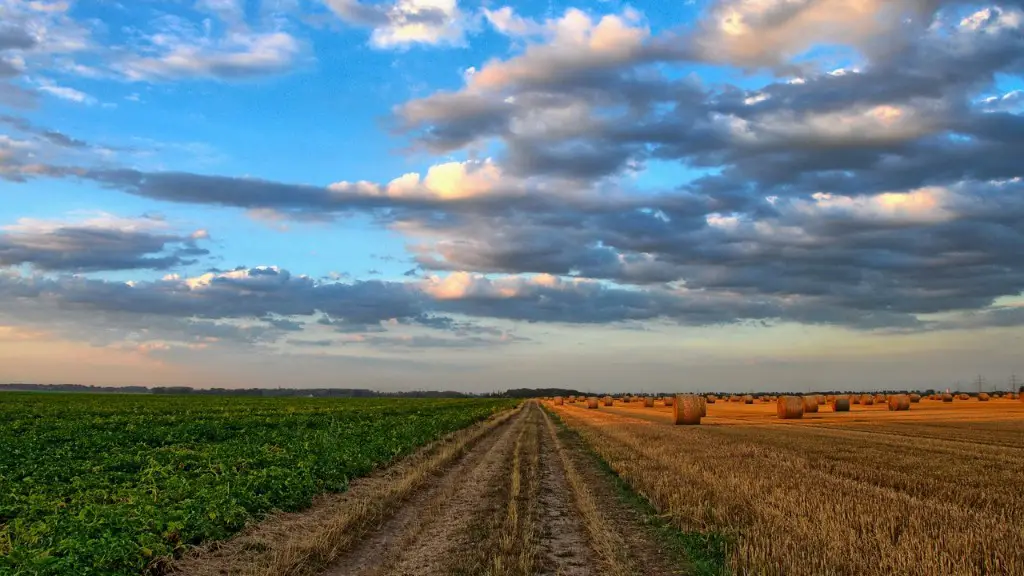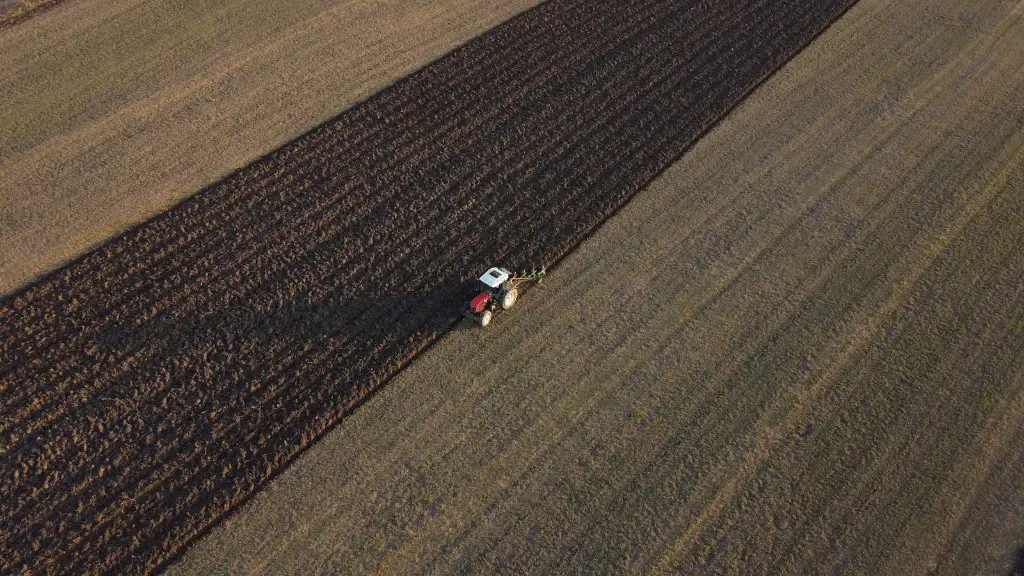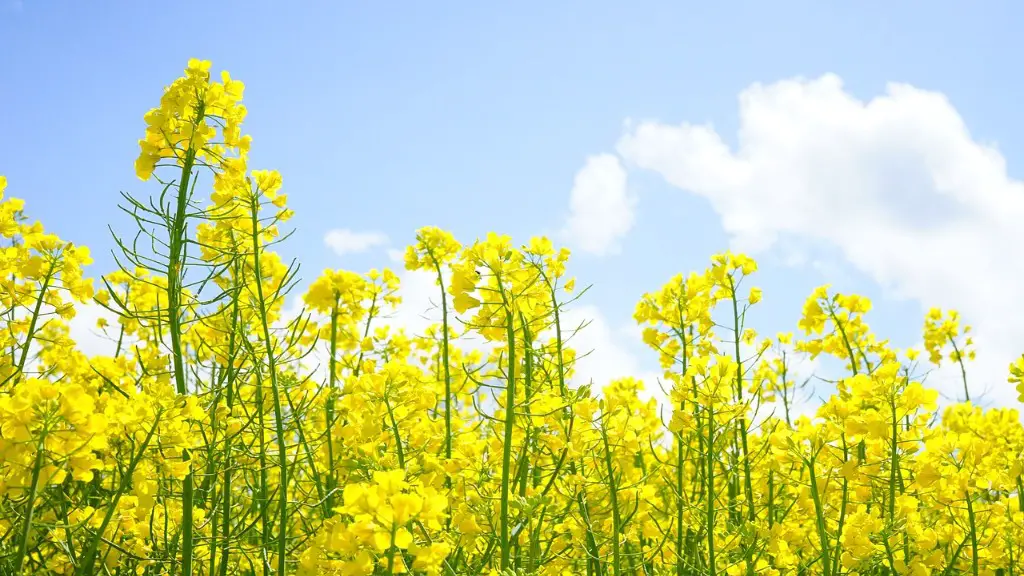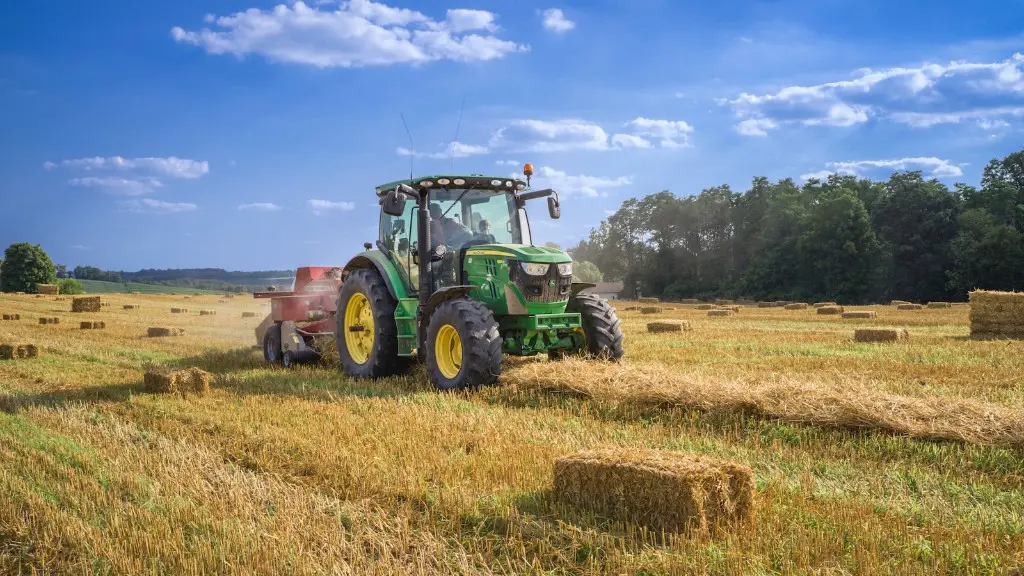The world is facing a water crisis. Agriculture is a major user of water, and as the world’s population grows, so does the demand for food. Agriculture is already using 70% of the world’s freshwater resources, and by 2025, this is expected to increase to 80%. With the world’s water resources under strain, it is crucial that agriculture uses water more efficiently.
There are a number of ways to do agriculture with less water. One way is to use irrigation systems that are more efficient. Another way is to choose crops that are more drought-resistant. And, finally, farmers can adopt water-saving practices, such as no-till farming.
No-till farming is a type of agriculture that uses very little water. It is a system of agriculture where crops are grown without disturbing the soil. This means that there is less evaporation, and the soil is able to hold more water. No-till farming also helps to preserve the environment by reducing carbon emissions and reducing the need for chemical fertilizers.
Adopting these water-saving practices will help to ensure that agriculture can continue to meet the world’s demands for food, even as the population grows and the demand for water increases.
There are many ways to do agriculture with less water. One way is to use irrigation techniques that minimize water loss through evaporation. Another way is to select crops that are more drought-resistant.
How can we use less water in agriculture?
There are many ways to improve irrigation water management. Some of the most common include drip irrigation, capturing and storing water, irrigation scheduling, composting and mulching, and dry farming. These methods can help reduce water loss due to evaporation, improve soil health, and increase crop yields.
Drought-tolerant vegetables are those that can withstand periods of dryness or minimal watering without suffering significant damage. Some drought-tolerant vegetables are more tolerant than others, and some may require more care during periods of drought. The best way to ensure that your vegetables are getting the water they need is to water them deeply and less frequently. This will help them develop deep roots that can access moisture even during dry periods. The following are some of the best drought-tolerant vegetables:
Swiss chard: Swiss chard is a leafy green vegetable that is tolerant of drought conditions. It has deep green leaves and thick, fleshy stems.
Cowpeas: Cowpeas are a type of legume that is tolerant of drought conditions. They have large, leathery leaves and long, thick roots.
Okra: Okra is a tropical vegetable that is tolerant of drought conditions. It has large, fleshy leaves and thick, fibrous stems.
Pole beans: Pole beans are a type of legume that is tolerant of drought conditions. They have long, slender stems and small, delicate leaves.
Zucchini: Zucchini is a type of squash that is tolerant of
What is the most water efficient farming method
Drip irrigation is a type of irrigation that uses a system of small tubes to deliver water directly to the roots of plants. This method is much more efficient than other methods of irrigation, such as sprinklers, and can save farmers up to 80% of their water usage.
In addition to being more efficient, drip irrigation also allows farmers to automate their irrigation scheduling. This means that they can set up their irrigation system to water their plants at specific times of day, or even on specific days of the week. This automation can save farmers a lot of time and effort, as they no longer need to manually water their plants.
High-efficiency irrigation technologies can help to reduce water lost to evaporation or run-off. Drip irrigation systems and Low Energy Precision Application (LEPA) sprinklers can help to drops low to the ground, which can reduce the amount of water that is lost.
What are 5 ways to use less water?
Water is a precious natural resource, and it’s important that we all do our part to conserve it. Here are 25 ways you can save water in your home:
1. Check your toilet for leaks. A leaking toilet can waste hundreds of gallons of water per day.
2. Stop using your toilet as an ashtray or wastebasket. This can save several gallons of water per day.
3. Put a plastic bottle in your toilet tank. This can save up to 1 gallon of water per flush.
4. Take shorter showers. This can save several gallons of water per day.
5. Install water-saving shower heads or flow restrictors. This can save several gallons of water per day.
6. Take baths. This can save several gallons of water per day.
7. Turn off the water while brushing your teeth. This can save up to 4 gallons of water per day.
8. Turn off the water while shaving. This can save up to 3 gallons of water per day.
9. Don’t let the water run while washing your hands. This can save up to 3 gallons of water per day.
10. Fill the
A successful dryland farming system must be able to retain precipitation on the land, reduce evaporation from the soil surface, and utilize crops that have drought tolerance and that fit the precipitation patterns. All three of these components are essential for a successful dryland farming operation.
What grows well in a drought?
Conserving water is important, and one way to do that is to grow high-yielding vegetables. These vegetables require less water to produce a good crop, so you’ll be using less water overall. Some examples of high-yielding vegetables include beans, chard, mustard, eggplants, peppers, tomatoes, squash, quinoa, and amaranth. When planning your garden, consider which crops will need the most water and when they will need it. This will help you to use water more efficiently.
Dry farming is a type of agriculture where crops are grown without irrigation. This method is typically used in areas where water is scarce, or where the climate is too hot and dry for irrigation to be effective. In California, dry farming is used to grow a variety of crops, including grapes, tomatoes, pumpkins, watermelons, cantaloupes, winter squash, olives, garbanzos, apricots, apples, and potatoes. This type of farming is often more sustainable than irrigated agriculture, as it uses less water and is less likely to deplete groundwater reserves.
Which crops are low water agriculture
Jowar, millets, horse gram, wheat, maize, cowpea, and groundnuts are crops that require less water. These are also called rain-fed crops. They are usually grown in areas where rainfall is scanty and irrigation facilities are limited. They have deep roots and can withstand long periods of drought. They are hardy crops and can grow in poor soils.
Sugarcane is a highly water-intensive crop, requiring 1800-2200 mm of water per season. It is the least water-efficient crop grown in the world, and as a result, is a major contributor to water scarcity. In areas where water is scarce, sugarcane cultivation is often a major contributor to water stress and water conflict.
What agriculture takes the most water?
Water-intensive crops like rice, soybeans, wheat, sugarcane, cotton, and alfalfa need a lot of water to grow. Pasture also requires a lot of water. These crops are grown in areas with high rainfall or irrigation.
Water is a precious resource and it is important that we conserve it. Here are some tips to help you do your part in conserving water:
-Never use your toilet as a waste basket. This can lead to water waste and can also cause clogs.
-Do not let the water run while shaving or brushing teeth. This is a wasted use of water. Rinse your razor or toothbrush in the sink before use and then turn the water off until you are ready to rinse.
-Take short showers instead of tub baths. This can save a lot of water. If you must use a tub, close the drain before turning on the water and fill the tub only half full.
What are 50 ways to save water
Water conservation is important because it helps to preserve this essential resource. There are many ways to conserve water, and each person can do their part to help. Some simple ways to conserve water include:
-Turning the faucet off while brushing your teeth
-Taking shorter showers
-Only running the dishwasher and washing machine when they are full
By conserving water, we can all help to preserve this vital resource for future generations.
showering instead of baths, fixing leaky taps, and using low flow aerators are all great ways to save water. For more water saving tips, check out the Top 10Water Saving Tips from the World Wildlife Fund.
What is farming without water called?
Dry farming is a type of agriculture that doesn’t rely on irrigation. This means that farmers have to be more careful about choosing crops that will do well in dry conditions. Dry farming is common in regions where there is limited moisture, such as in the western United States.
Dryland grain crops are those that grow using the winter water stored in the soil, rather than depending on rainfall during the growing season. They include wheat, corn, millet, rye, and other grasses that produce grains. Dryland farmed crops may also include winter wheat, maize, beans, sunflowers or even watermelon.
Conclusion
There are a number of ways to do agriculture with less water. One way is to use drought-resistant crops. Another way is to practice crop rotation. This ensures that the soil does not become too dry and that the crops get the water they need.
Agriculture is an important sector of the economy, and water is essential for agricultural production. However, due to population growth and limited water resources, it is necessary to do agriculture with less water. There are many ways to achieve this, such as using more efficient irrigation systems, planting drought-resistant crops, and improving water management practices. With proper planning and implementation, it is possible to do agriculture with less water and still meet the needs of the population.

